The freezer sections of refrigerators often have limited capacity. Thus, it's a great idea to have a chest freezer available to store larger items, such as frozen meats. Unfortunately, ice buildup can be a problem that ruins the taste of your foods by causing freezer burn. However, ice buildup is totally fixable! We've researched the topic and found some solutions for you.
Although ice buildup in the freezer may seem like a significant issue, it's easily removed without having to hire experts. Here are a few ideas:
- Prevent ice buildup.
- Use a scraper to remove ice.
- Use a brush to remove ice.
- Suction with a shop-vac to remove ice.
- Pour hot water over the ice.
Now, it's important to understand how a chest freezer ices up in the first place. Thankfully you have a lot of ways to fix it. But you should keep reading to find out how to do them at home.
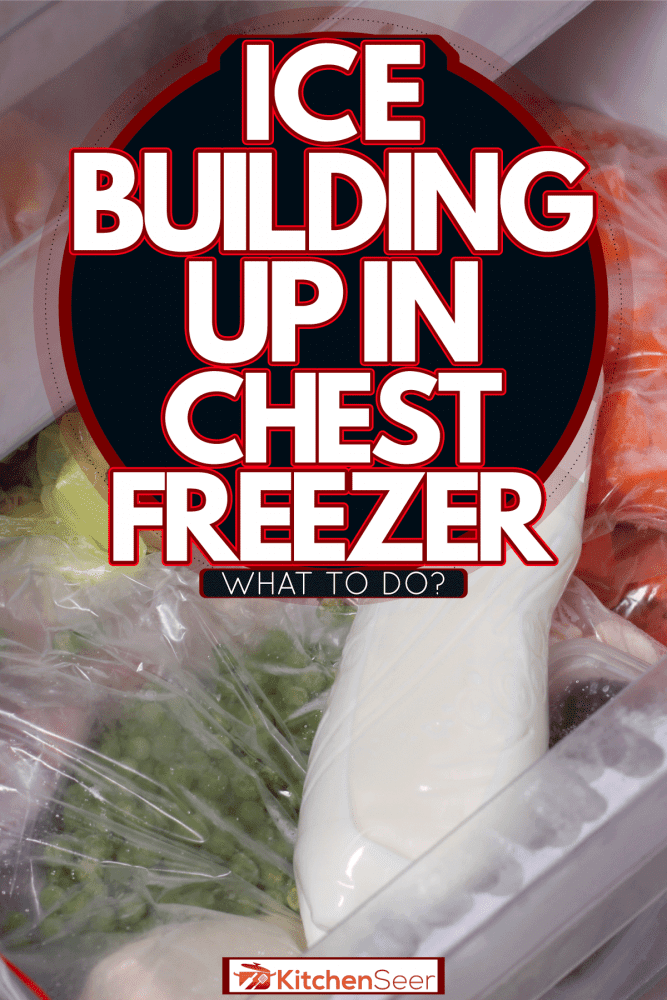
What Causes a Chest Freezer to Ice Up?
There are a few issues that are likely the cause of ice buildup in a chest freezer. Sometimes chest freezers ice up due to unforeseeable circumstances, such as the thermostat breaking. But there are a few causes of ice buildup that you can control, including:
- Maintain the appropriate humidity level and temperature.
- Keep the lid closed.
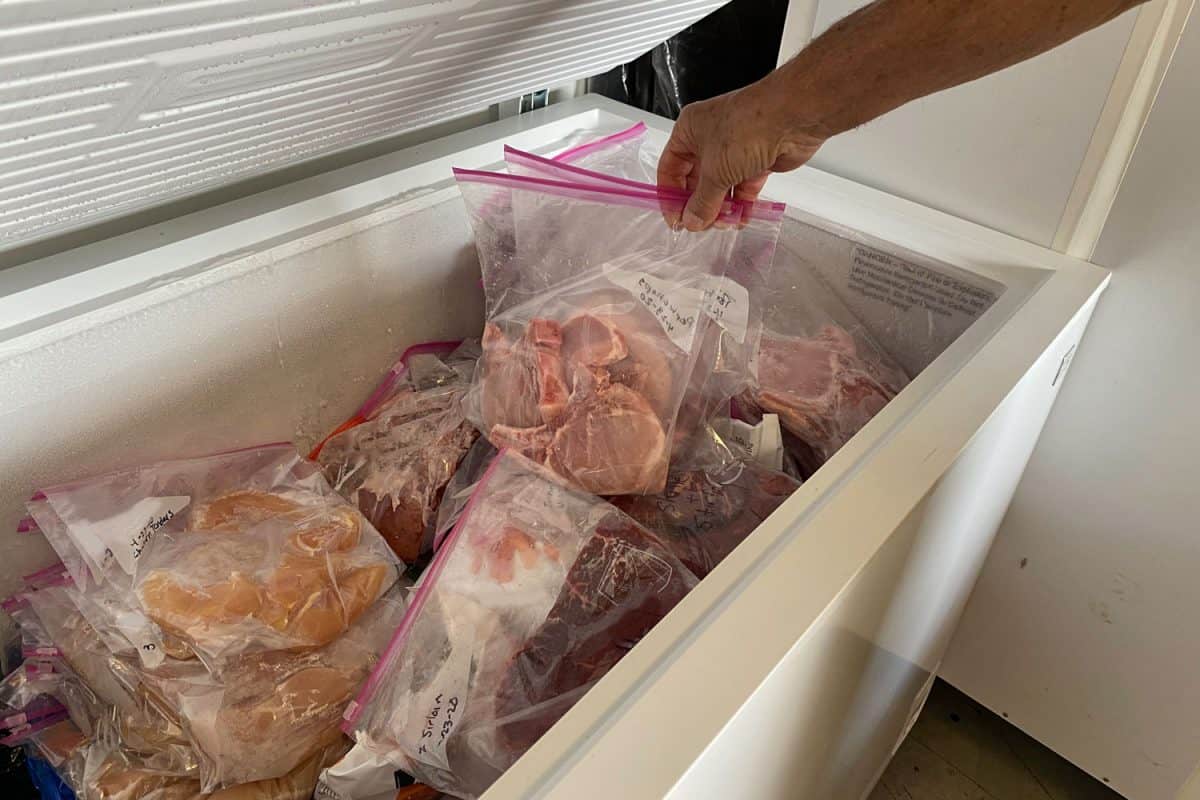
Humidity and Temperature
Firstly, you should maintain the correct humidity level and temperature in order to maintain a cold environment to store your frozen goods. Otherwise, the food will perish, and you'll have to throw them out.
Although humidity is a natural (and sometimes annoying) element of nature, it is bad for freezers. As the temperature rises, condensation (or "sweat") forms on the sides of the chest freezer. When the condensation dries, it forms hard, stiff ice.
Improper temperature storage of foods is dangerous; food will spoil and cause foodborne illnesses, such as E-coli infection and botulism. And botulism can become deadly if not taken care of quickly. Plus, lower temperatures will cause ice to melt and build up more ice. Thus, you should maintain an appropriate freezer temperature of 0° F (or -18° C). So, check the thermometer.
Lid Closed
Frequently opening and closing the chest freezer's lid may cause ice buildup because it increases the temperature. Although keeping the lid closed might seem like an obvious solution, it may be more challenging than expected to do with hungry, growing children running around.
Also, your kids might not understand that the delicious cookie dough needs to be baked first before consuming it if it contains raw eggs.
Since you're already here, you should check out our great article about frozen cookie dough. Click here to read "Should You Defrost Cookie Dough Before Baking?"
How Do you get Ice Out of a Chest Freezer without Defrosting It?
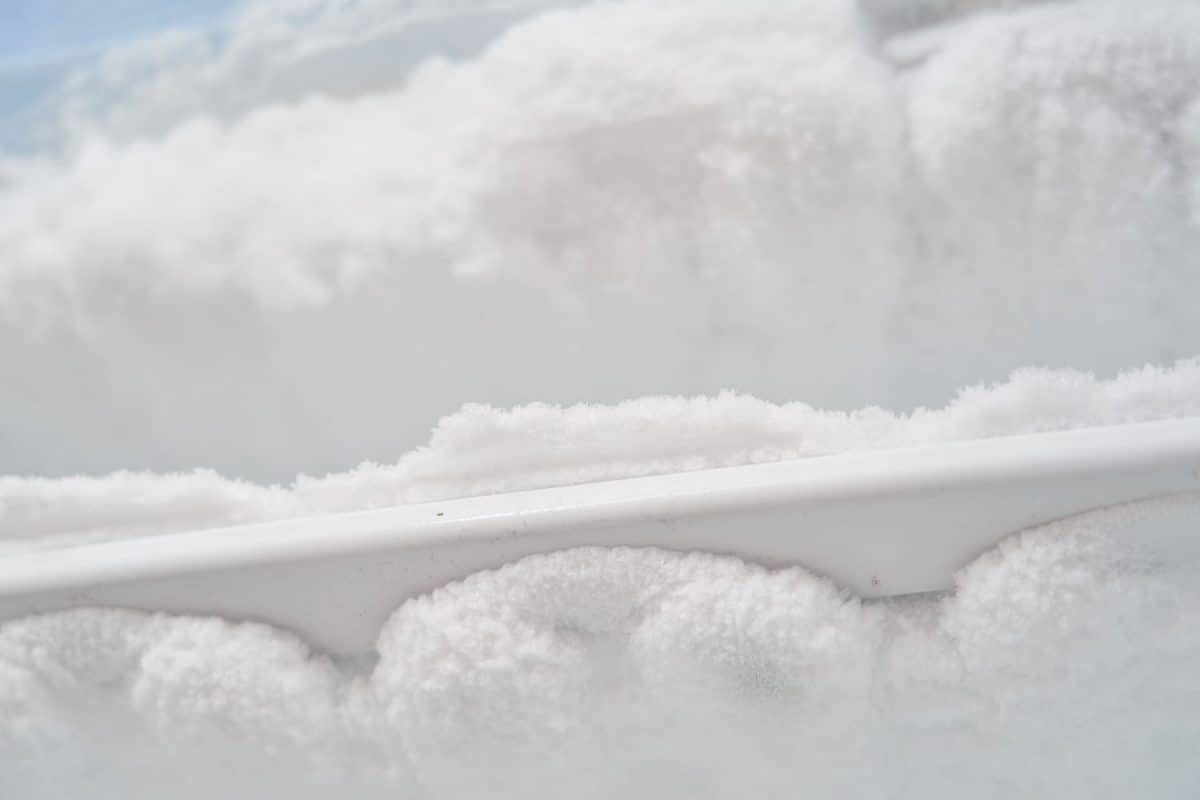
Since you're reading this article, you are probably past the prevention stage and in need of some ideas to remove ice buildup. Not all chest freezers have the ability to auto defrost. Thus, you have to get creative and manually correct the ice buildup yourself.
If you've never dealt with ice buildup before, you might be at a loss for what to do. Well, we're here to help you figure it out!
Use a scraper
Generally, ice buildup can be removed by a scraper. Ice scrapers are usually affordable. You should select a plastic ice scraper because metal scrapers may damage the walls of the freezer chest by creating cuts along the way. And food and debris may become trapped inside the cuts, creating a great breeding house for bacteria.
Beware that this is not an easy task. You'll probably get a good workout in! Hence, it's a good idea to use a scraper with an ergonomic handle. Here is an excellent pair of plastic scrapers with foam handles:
Click here to see these scrapers on Amazon.
Use a brush
Similar to a scraper, you can use a hard bristle brush to remove ice buildup.
But using a brush to scrape off ice is probably one of the most strenuous ways to remove ice buildup, especially for a large freezer chest. In this case, you might want to use a long handle brush. This will allow you to reach further into the freezer chest without having to crawl inside it.
Here is an excellent long handle brush scraper that comes with multiple attachments:
Click here to see it on Amazon.
Pour hot water
Overall, hot water is probably your most affordable option for getting rid of ice buildup in the chest freezer. If you pour hot water over the ice buildup, then the ice will immediately melt.
Some sources insist that you require boiling water. However, this is unnecessary, unsafe, and untrue! You do not need boiling water in order to melt ice because the melting point of ice is 32°F (0°C). This means that even cool water will melt ice. You've probably noticed this when you add ice cubes into a room temperature drink.
Although it takes a little work, you can do this method on your own. Just follow these steps:
- Remove all the food.
- Unplug the freezer chest.
- Lay down a few towels on the bottom.
- Fill a bucket with hot water.
- Carefully pour small sections of the hot water along the walls of the freezer chest.
- Remove the wet towels.
- Dry the walls and bottom of the freezer chest.
- Plug in the freezer chest.
- Add the food back.
Suction with a Shop Vac
Understandably, the above methods may be too challenging for some people. Use of a Shop-Vac (or Wet/Dry Vac) may be a good alternative. Follow these steps:
- Remove all the food from the freezer chest, and store it appropriately.
- Unplug the freezer chest.
- Insert the hose of the Shop-Vac into the blowing end of the vacuum cleaner.
- Place the other end of the hose inside the chest freezer, and close the lid.
- Turn the Shop-Vac on.
- Allow it to work for 25 minutes.
- Turn off the Shop-Vac.
- Gather the large solid ice pieces at the bottom into a bucket. Dispose of the ice.
- Change the vacuum cleaner to suction.
- Vacuum the remaining ice and smaller pieces of ice from the bottom.
- Plug in the freezer.
- Add the food back in the freezer.
You might understand better with a visual. Check out this video:
Hopefully, these methods help you remove ice buildup from the chest freezer. Now, stay tuned for some common questions.
Can you use a Hairdryer to Defrost a Freezer?
Yes, surprisingly you can use a hairdryer to defrost a freezer. Of course, you should follow a few safety precautions, such as:
- Ensure that the freezer is unplugged.
- Do not stand in water or on a wet surface while using a hairdryer.
- Be weary of the hairdryer's cord while you are maneuvering around the freezer.
- Periodically check the temperature of the hairdryer's barrel to ensure that it does not overheat.
In order to prevent overheating, you should move the hairdryer frequently over surfaces, just like when drying your hair. Don't leave it in one place for too long.
Do Chest Freezers have a Drain?
Chest freezers may or may not have a drain. If they do have a drain, then you can open the drain to allow melted ice to flow out, which makes defrosting a lot easier. But make sure you lay down a few towels to catch the water.
How Often should you Defrost a Chest Freezer?
Typically, chest freezers should be defrosted at least once a year. This will prevent damage to the internal temperature gauge, which maintains the appropriate coldness so food does not spoil.
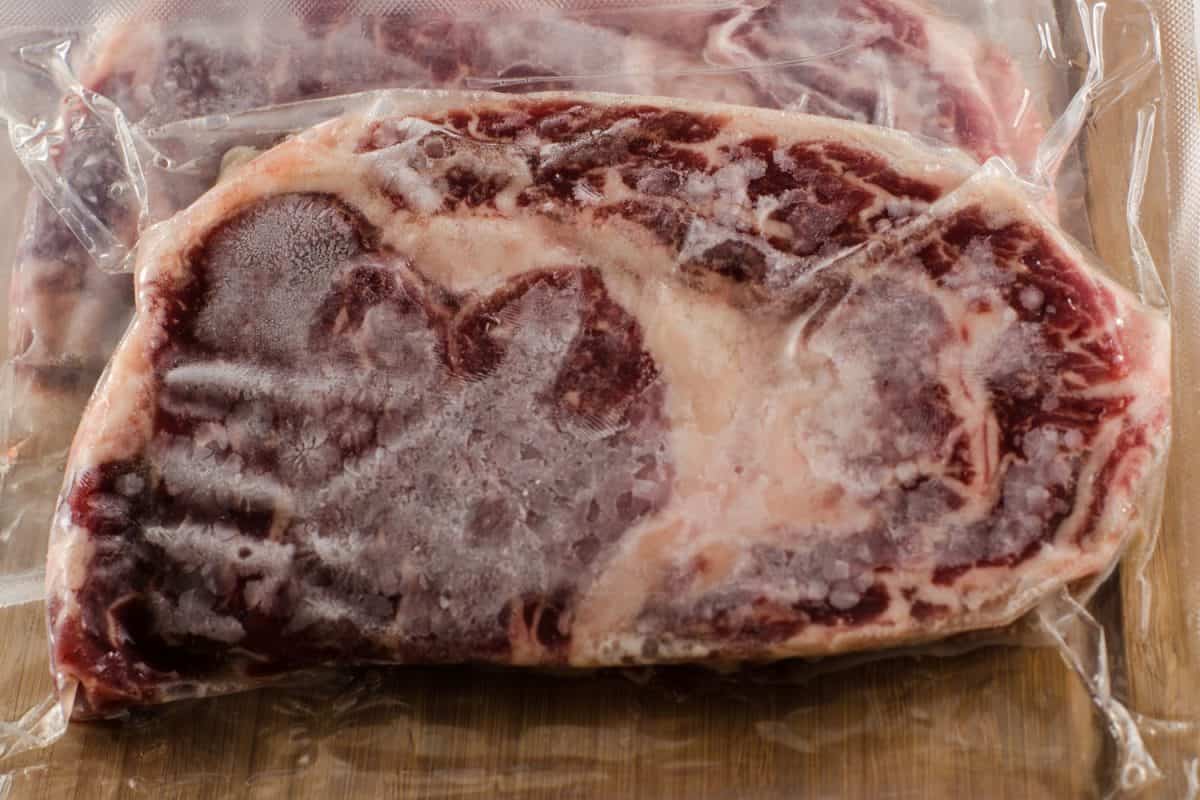
By the way, frozen foods may be edible indefinitely if stored appropriately, but their quality has a limit. For example, steaks can maintain good quality for 4 to 12 months in the freezer.
Check out our article, "Does Steak Go In the Fridge or Freezer?", to learn more about freezing steaks.
How Many Hours does it Take to Defrost a Freezer?
Manually defrosting a freezer takes 1.5 to 3 hours for the scraper or brush methods. For the hot water and Shop-Vac methods, it only takes 45 minutes to 1.5 hours. For the latter, other sources are doing most of the work. So, typically it's less exhausting.
In Closing
Altogether, ice buildup in the chest freezer is important to remove. Prevention of ice build would be great, but sometimes you can't prevent it.
Manually removing ice buildup from the chest freezer is doable on your own. But some methods, like using scrapers or brushes, are physically more challenging than others. Applying hot water or suctioning with a Shop-Vac may take less time and be easier to use physically.



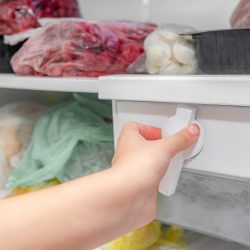
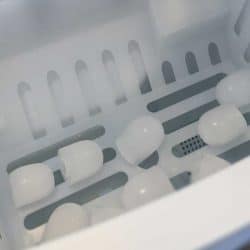
![Double door freezer on a gray background, How Big Is The Typical Freezer? [4 Sizes Explained]](https://kitchenseer.com/wp-content/uploads/2020/05/Double-door-freezer-on-a-gray-background-250x250.jpg)
![A freezer in the modern kitchen, Where Should I Put My Freezer? [10 Locations to Consider]](https://kitchenseer.com/wp-content/uploads/2020/05/A-freezer-in-the-modern-kitchen-250x250.jpg)
![A freezer accumulating ice on the side, How To Defrost Kitchenaid Freezer [French Doors Or Bottom]?](https://kitchenseer.com/wp-content/uploads/2022/07/A-freezer-accumulating-ice-on-the-side-250x250.jpg)
